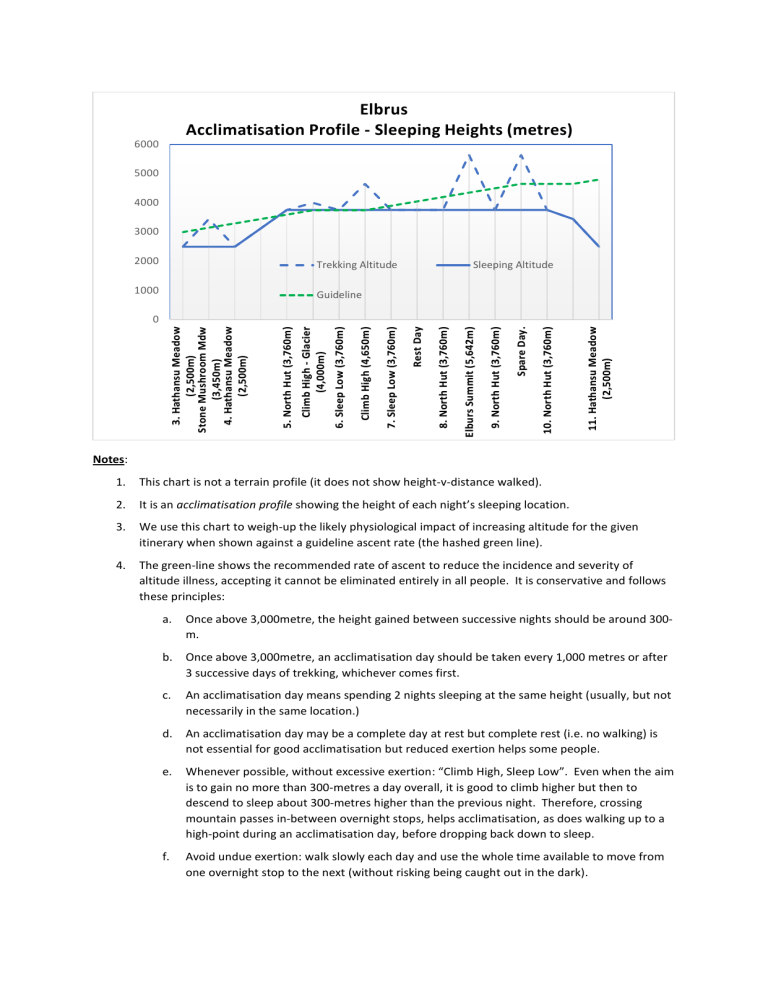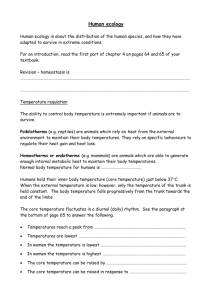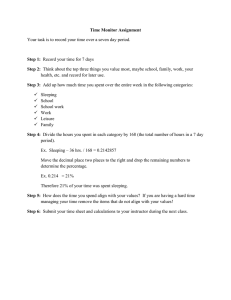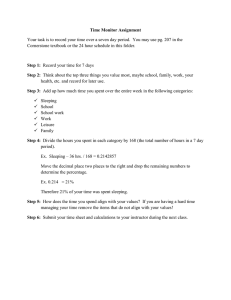Elbrus Acclimatisation Profile: Sleeping Heights & Ascent Guide
advertisement

Elbrus Acclimatisation Profile - Sleeping Heights (metres) 6000 5000 4000 3000 2000 Trekking Altitude 1000 Guideline Sleeping Altitude 11. Hathansu Meadow (2,500m) 10. North Hut (3,760m) Spare Day. 9. North Hut (3,760m) Elburs Summit (5,642m) 8. North Hut (3,760m) Rest Day 7. Sleep Low (3,760m) Climb High (4,650m) 6. Sleep Low (3,760m) Climb High - Glacier (4,000m) 5. North Hut (3,760m) 3. Hathansu Meadow (2,500m) Stone Mushroom Mdw (3,450m) 4. Hathansu Meadow (2,500m) 0 Notes: 1. This chart is not a terrain profile (it does not show height-v-distance walked). 2. It is an acclimatisation profile showing the height of each night’s sleeping location. 3. We use this chart to weigh-up the likely physiological impact of increasing altitude for the given itinerary when shown against a guideline ascent rate (the hashed green line). 4. The green-line shows the recommended rate of ascent to reduce the incidence and severity of altitude illness, accepting it cannot be eliminated entirely in all people. It is conservative and follows these principles: a. Once above 3,000metre, the height gained between successive nights should be around 300m. b. Once above 3,000metre, an acclimatisation day should be taken every 1,000 metres or after 3 successive days of trekking, whichever comes first. c. An acclimatisation day means spending 2 nights sleeping at the same height (usually, but not necessarily in the same location.) d. An acclimatisation day may be a complete day at rest but complete rest (i.e. no walking) is not essential for good acclimatisation but reduced exertion helps some people. e. Whenever possible, without excessive exertion: “Climb High, Sleep Low”. Even when the aim is to gain no more than 300-metres a day overall, it is good to climb higher but then to descend to sleep about 300-metres higher than the previous night. Therefore, crossing mountain passes in-between overnight stops, helps acclimatisation, as does walking up to a high-point during an acclimatisation day, before dropping back down to sleep. f. Avoid undue exertion: walk slowly each day and use the whole time available to move from one overnight stop to the next (without risking being caught out in the dark). 5. On the Jagged Globe Elbrus Expedition, once you are above 3,000m, you will experience: Criteria Outcome A maximum height gained in a single day of 1,260m A maximum height gained between rest days of 1,260m Acclimatisation/ Rest days 4 or 5 Maximum consecutive days’ trekking (in ascent) between acclimatisation stops (i.e. no net gain in sleeping height). Average Ascent Rate between 3,000-metres & high sleeping point. 1. 760m/day Comment 1. Day 5. From Hathansu Meadow Base Camp (2,500m) to North Hut (3,760m) 2. 760m above the 3,000m threshold for altitude considerations as per the guidelines. 3. Comes between acclimatisation stops. Followed by no further height gain in sleeping altitude for the rest of the trip. 4. Climbing high (to 3,450m) and then sleeping low on Day 4 will prepare you for this big ascent. 5. This ascent will be good preparation for the big climb on summit day. There are no intermediate campsites. Before the summit ascent. Day 5 (but you will be active for 4 consecutive days) Carried out at modest altitude and sandwiched between acclimatisation days. Summary: 1. 2. 3. 4. 5. 6. 7. It takes one big day to walk to North Hut, from where the mountain will be climbed. This is followed by 3 days/ 4 nights at the same height before attempting the summit – 3 clear days to acclimatise and rest ready for the top. Having exceeded the recommended rate of ascent on Day 5, the profile matches or betters the guideline ascent profile on Day 6 and thereafter. The big challenge will be climbing 1,900m on summit day. Spending 4 consecutive nights at 3,760m will ensure you are as well acclimatised as can be achieved reasonably before the summit attempt. “Climbing high, sleeping low” for 2 days and resting for one improves your acclimatisation and physical readiness further. There is a spare day if bad weather, or conditions in general prevent an ascent on Day 9.




